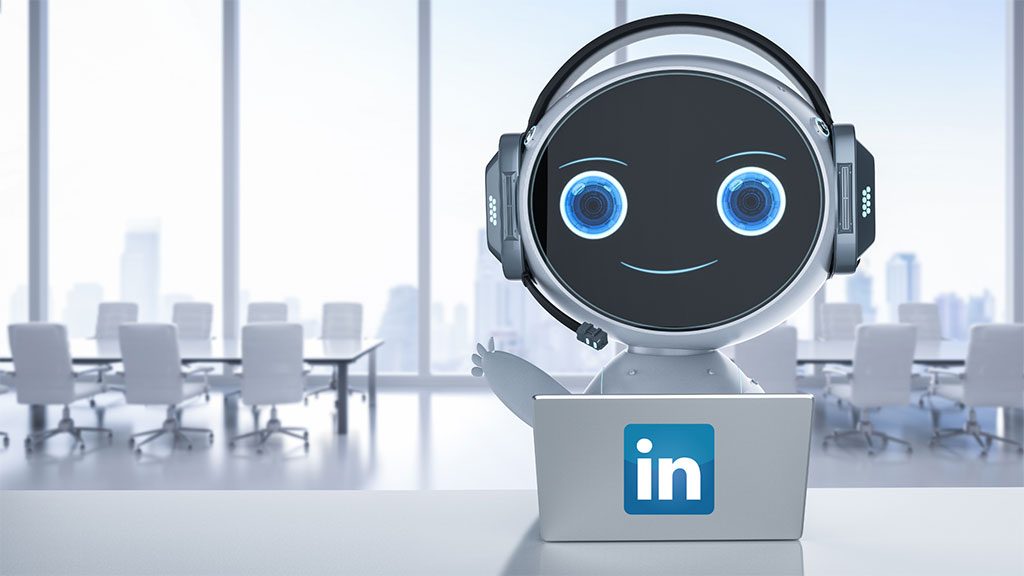
It seems like you don’t exist if you are in business but not on LinkedIn. If your business practices include looking someone up there – perhaps somebody you’re considering hiring, a B2B sales prospect, or a vendor, what do you think when that person or business has no profile? Does it make you think that they are not a full-fledged, ‘grown-up’ professional? It’s not a stretch to surmise that.
LinkedIn has grown into an invaluable platform for professionals. People use it to connect, network, and explore business opportunities. But with its growing popularity, red flags have appeared. There has been an increase in the presence of fake LinkedIn sales bots.
These sales bots impersonate real users and attempt to scam unsuspecting individuals. This is one of the many scams on LinkedIn. According to the FBI, fraud on LinkedIn poses a ‘significant threat’ to platform users.
To help you avoid being taken in by these charlatans, let’s delve into the world of fake LinkedIn sales bots. We’ll explore their tactics and provide you with valuable tips. You’ll learn how to spot and protect yourself from these scams. By staying informed and vigilant, you can foster a safer LinkedIn experience.
How can you tell if someone is a bot on LinkedIn?
Just like most scams, those perpetrated through social media scams often play on emotions. We all like recognition, so who doesn’t want to be thought of as special or interesting? Scammers will reach out to connect. That connection request alone can make someone feel wanted. People often knee-jerk accept before researching the person’s profile.
Add some kind of business proposition on top of that, and people can easily be fooled. People that are looking for a job or business opportunity may have their guard -and their suspicions - down. There is also an inherent trust people give other business professionals. Many often trust LinkedIn connections more than Facebook requests.
How can you tell the real requests from the fake ones? Here are some tips on spotting the scammers and bots.
Generic Photos and Incomplete Profiles
Fake LinkedIn sales bots often have incomplete, threadbare profiles, with limited or generic information. They may lack a comprehensive work history or educational background. Additionally, these bots tend to use generic profile pictures like stock photos or images of models. Still, it’s very possible that ‘Nancy Notabot’ looks just like Kendall Jenner (unless she states she graduated from Stanford in 1992).
If a profile lacks specific details, it should raise a red flag. Authentic LinkedIn users typically provide comprehensive information to establish credibility and foster trust among their connections. LinkedIn is for making business connections, and a smart user wants anyone viewing their profile to feel comfortable with them.
Generic and Impersonal Messages
Their messaging approach is typically one of the key characteristics of fake sales bots. It's often impersonal and generic, since these bots often send mass messages with no personalization. Perhaps there are no specific references to your profile or industry. They often use generic templates or scripts to engage with potential targets. This is usually a dead give-away.
Sincere LinkedIn users typically tailor their messages to specific individuals. They might mention shared connections, recent posts, or industry-specific topics, all of which foster a feeling of kinship. Exercise caution If you receive a message that feels overly generic or lacks personalization. Be sure to scrutinize the sender's profile before proceeding further.
Excessive Promotional Content and Unrealistic Claims
Fake LinkedIn sales bots are well-known for bombarding users, sending a rash of DMs with excessive promotional content, and making unrealistic claims. These bots often promote products or services aggressively. Usually without offering much information or value.
Some of the big promises include overnight success, incredible profits, or instant solutions to complex problems. Genuine professionals on LinkedIn focus on building relationships. They try to provide valuable insights and engage in meaningful discussions instead of resorting to constant self-promotion.
Make no mistake about it: everybody who is on LinkedIn is there to further their own goals, but be wary of connections that focus solely on selling and don’t offer any meaningful content or engagement.
Inconsistent or Poor Spelling and Grammar
Always pay attention to the spelling and grammar in messages when communicating on LinkedIn. You may dismiss an error from an international-sounding connection, but it could also be a bot.
Bogus LinkedIn sales bots often display inconsistent or poor grammar and spelling mistakes. These errors can serve as a clear sign that the sender is not genuine. Legitimate LinkedIn users typically take pride in their communication skills. They try to maintain a high standard of professionalism.
If you encounter messages with several grammatical errors or spelling mistakes, exercise caution. Investigate further before engaging with the sender.
Unusual Connection Requests and Unfamiliar Profiles
Another ploy often used by fake LinkedIn sales bots is the connection request, because they generally send out a lot of these indiscriminately. They may target users that seem to have little or no relevance or shared professional interests.
It may be flattering that people want to connect with you but be cautious when accepting connection requests from unfamiliar profiles. Especially if the connection seems unrelated to your industry or expertise. Ask yourself, “Why does this person want to connect with me?”
Take a couple of minutes and review the requesting profile. Check their mutual connections and assess the relevance of their content. Legitimate LinkedIn users are more likely to have a connection. They typically send connection requests to others with shared interests or professional networks.
Frequently Asked Questions
Q: Do a lot of people use LinkedIn?
A: According to LinkedIn, they have over 950 million members worldwide. They don’t specify if those are all active users.
Q: What percentage of people pay for LinkedIn?
A: Zippia states that “Worldwide, about 39% of LinkedIn users have paid Premium subscriptions, whether they’re job-hunters, business owners, sales and marketing professionals, or recruiters.”
Q: Who uses LinkedIn the most?
A: Millennials make up 60% of LinkedIn's users. In addition, about 20% of users are between 18 and 24, and almost 18% are between 35 and 54. Only 2% are 55 and older.
Q: What is the fastest growing industry in LinkedIn?
A: In January of this year, LinkedIn stated, “Overall, we found that technology continues to be the fastest-growing field, which is consistent with trends from before the pandemic. Every one of the countries we looked at included tech among their top 10 fastest-growing roles.”
How secure is your network?
As a reputable member of the IT Support Los Angeles community since 2002, IT Support LA offers a FREE, no-risk network and security assessment. It is a non-intrusive scan that allows us to deliver a comprehensive report that is yours to keep. No strings, and no obligation to ever use our Managed IT Services.
The best defenses are expert Cybersecurity to protect your data from theft, and a top-notch Managed Services Provider to ensure continued reliability and defenses against newly emerging threats.
With our 100% Money Back Guarantee in writing, we offer a risk-free way for prospective clients to try us out. Because we do not require a ‘hard’ contract, our clients can fire us at any time with 30 days’ notice. We have to be good.
Among the Managed IT services we provide:
IT HelpDesk Service
Onsite IT Support
Cybersecurity
Cloud migration and management
Email migration services
Backup and disaster recovery
VoIP phone systems
IT disposition and recycling
Office moves
White label services (IT to IT)
IT Support LA is an award-winning Managed Services Provider (MSP):
o 3 Years awarded Best IT Support by the Small Business Expo
o Awarded 2nd best company of any type in the US by the Small Business Expo SB100
o Awarded Best IT Support in California by Channel Futures
o Winner of Best IT Support in Los Angeles by Channel Futures
o Listed as one of the world’s Top 501 MS by CRN and in the top 250 in the ‘Pioneer’ listing
o 4 years listed as one of the Top 501 MSPs in the World by Channel Futures
o Listed as #21 MSP in the World in Channel Futures NextGen 101
o Globee 2021 Bronze Award winner for Chief Technology Officer of the Year
o Globee 2022 Gold Award winner for Chief Technology Officer of the Year
o Named one of 2022’s 50 ‘Best’ businesses in California by UpCity
o Named Best of IT winner by UpCity
o Winner of Local Excellence Award for 2021, 2022 and 2023 by UpCity
o Named Best of Cloud Consulting winner by UpCity
o Certified as Top Managed Services Provider and Cybersecurity Pro by UpCity
o Named Best IT Services in Los Angeles by Expertise.com.
Need Training in Online Security?
Spotting fake LinkedIn sales bots is crucial for maintaining a safe online experience. By being vigilant, you can protect yourself from potential scams.
AI is causing an increase in the sophistication of scams. You may need some help navigating what’s real and fake. Employees can also benefit by learning social media security.
Need help with personal or team Cybersecurity training? We have a team of friendly experts that can improve your scam detection skills.
Give us a call today to chat. It’s also a great opportunity to take advantage of our FREE network and Cybersecurity risk assessment.
818-805-0909


